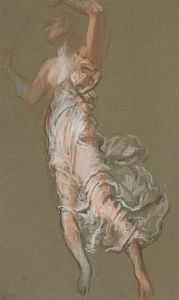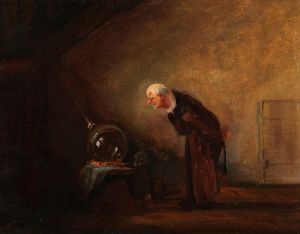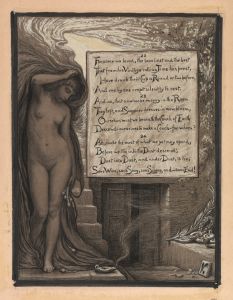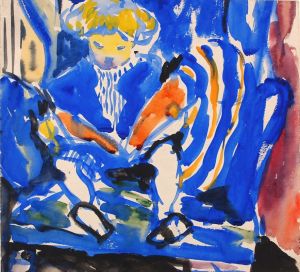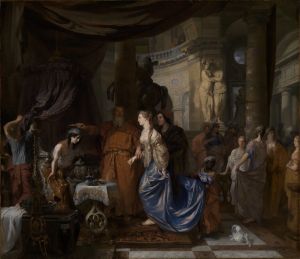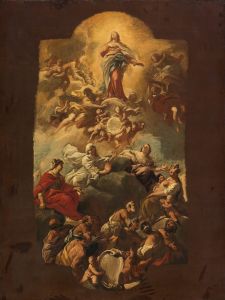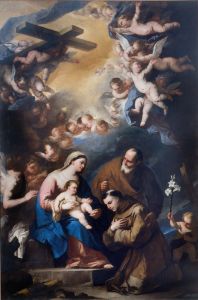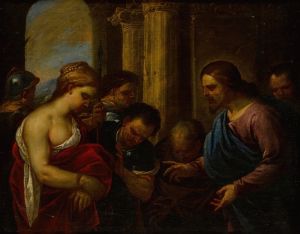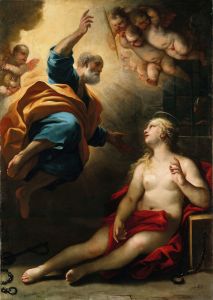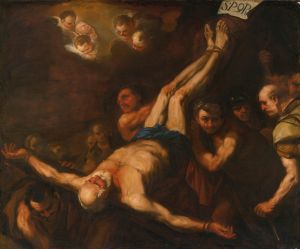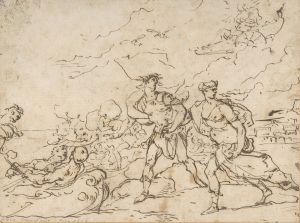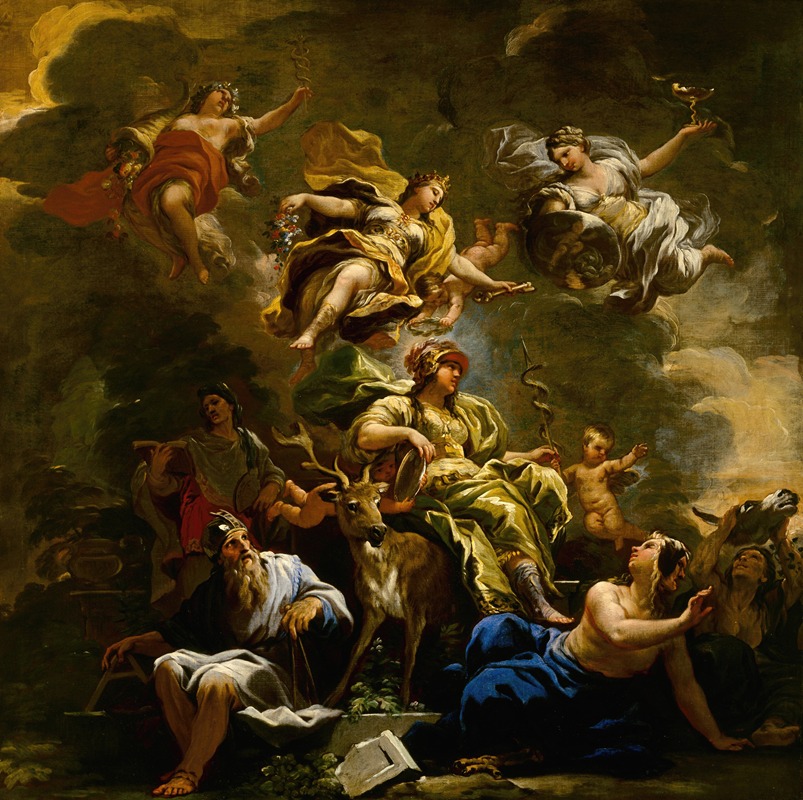
Allegory of Prudence
A hand-painted replica of Luca Giordano’s masterpiece Allegory of Prudence, meticulously crafted by professional artists to capture the true essence of the original. Each piece is created with museum-quality canvas and rare mineral pigments, carefully painted by experienced artists with delicate brushstrokes and rich, layered colors to perfectly recreate the texture of the original artwork. Unlike machine-printed reproductions, this hand-painted version brings the painting to life, infused with the artist’s emotions and skill in every stroke. Whether for personal collection or home decoration, it instantly elevates the artistic atmosphere of any space.
"Allegory of Prudence" is a painting by the Italian Baroque artist Luca Giordano, created around the late 17th century. Giordano, born in Naples in 1634, was a prolific painter known for his rapid execution and versatility in various artistic styles. He was heavily influenced by the works of masters such as Peter Paul Rubens and Jusepe de Ribera, which is evident in his dynamic compositions and vibrant use of color.
The painting "Allegory of Prudence" is a fine example of Giordano's ability to convey complex themes through allegorical representation. Prudence, one of the cardinal virtues in classical philosophy, is often depicted as a figure with three faces, symbolizing the ability to look to the past, present, and future. This tripartite representation underscores the virtue's association with wisdom, foresight, and careful judgment.
In Giordano's depiction, Prudence is typically shown holding a mirror and a snake. The mirror represents self-knowledge and reflection, while the snake symbolizes wisdom and the ability to navigate through life's challenges with caution. The composition of the painting is carefully balanced, with Prudence often placed centrally, drawing the viewer's attention to her serene and contemplative expression.
The background and surrounding elements in "Allegory of Prudence" are rendered with Giordano's characteristic attention to detail and dramatic use of light and shadow. This technique, known as chiaroscuro, enhances the three-dimensionality of the figures and adds a sense of depth to the composition. The use of rich, warm colors further accentuates the painting's baroque aesthetic, creating a visually engaging and thought-provoking piece.
Giordano's "Allegory of Prudence" reflects the broader cultural and intellectual currents of the Baroque period, which emphasized the importance of moral virtues and the complexities of human nature. The painting serves not only as a visual representation of Prudence but also as a reminder of the enduring relevance of this virtue in guiding human conduct.
Luca Giordano's works, including "Allegory of Prudence," are housed in various prestigious collections and museums around the world. His contributions to Baroque art have been widely recognized, and his paintings continue to be studied and admired for their technical mastery and expressive power.
In summary, "Allegory of Prudence" by Luca Giordano is a masterful representation of one of the cardinal virtues, showcasing the artist's skill in allegorical painting and his ability to convey profound philosophical themes through his art. The painting remains a significant example of Baroque artistry and continues to captivate audiences with its intricate symbolism and dynamic composition.





